Canon has just announced their longest zoom lens for the RF mount, the RF 200-800mm f/6.3-9 IS USM ,and we’ve tried it in the real world. How was it? Pretty damn enjoyable! Is it worth considering? We certainly believe so! But there is a downside to it. Let’s have a proper look at the new telephoto.
It’s Not a Small Lens, Naturally
With an imposing range of 200-800mm, the lens simply cannot be small. But that is expected. What is surprising, however, is the lens’ weight. Yes, 2.05 kilograms is not light, but considering the siz,e it is pleasantly lightweight in hand, and once you mount a camera on the back of it, it is perfectly balanced regardless of your chosen focal length. It neatly stands on its tripod collar, which doubles as a smooth, rounded handle but unfortunately lacks built-in Arca-Swiss compatibility. Of course, the collar rotates to allow for vertical shooting. It does, however, lack clear stops at 0 and 90 degrees, so you do have to rely on the camera's internal spirit level or align the engraved notches on both the body of the lens and the collar. The option to attach a strap directly to the lens is welcome. I did not feel any discomfort carrying the lens mounted on a Canon EOS R3 all day this way. It was kept neatly tucked away on my back when not in use and easily accessible when needed.

The body of the lens is white as we’re used to with the majority of Canon’s telephoto offerings. But it does not carry the famous red ring. Yes, indeed, the RF 200-800mm f/6.3-9 IS USM is not of the “L” family. This should please many who were worried about the cost of the lens. The red ring is generally considered for the luxury and more costly lenses of Canon’s multiple lineups. I was told the main reason for the lens not being decorated by the red ring is the aperture but more on the actual diaphragm later.
The design is simple, effective, and somewhat beautiful. The majority of the barrel is streamlined with next to no unnecessary protrusions or quirks. Just a sleek shape with a few basic controls, and that’s it. Those are the three rings, two FN buttons, and two switches. The first and largest ring is most obviously in charge of your focal length. It is black and rubberized for a solid grip. The travel is not too long nor too short. It feels just right. The aforementioned tripod collar can get in the way when you’re shooting handheld, though, so for those occasions, it is much more comfortable to either rotate it upwards to use as a handle or remove it completely.

The tightness of the zoom is adjustable using the second smaller white ring right behind the zoom ring. It has “smooth” and “tight” settings, and the direction of the travel fits nicely with the direction of the zoom ring. I’d usually collapse the lens back to 200 millimeters and then just grab the tightness ring and keep going in the same direction, locking the zoom ring. This stops the front element from creeping downward when not in use.
The last ring serves two purposes, as we’ve already seen with other RF mount lenses like the RF 50mm f/1.8 STM. You can either use the ring for manual focus or you can flip a switch on the body of the lens and use the ring to control one of your pre-set values like aperture, ISO, shutter speed, or exposure compensation. The second switch on the lens toggles your image stabilization. There are no multiple IS modes like we are used to with telephoto lenses on the switch itself.
Even though the front element comes out as you zoom, the lens is still weather-sealed against the elements. However, Canon says it is not at the same level as their “L” series lenses. So, a light rain should be okay, but I’d be careful taking it to a rainforest when you’re expecting to go all Forrest Gump with “Rain that flew in sideways.”

It Is Not the Brightest
Speaking of rainforests, there might be another reason to not want to use this lens in such an environment. The brightest the RF 200-800mm can go is f/6.3 on the short end of 200 millimeters. Once you zoom out to 800 millimeters, your aperture drops down to f/9. The entire time I shot with it, my ISO has rarely dropped down to triple digits. More often than not, I had to use ISO values ranging from 1000 to 6400 just to keep my shutter speed fast enough. And that was in the middle of the day with a slight overcast. Thankfully though, cameras like the R6 Mark II or the R3 I used are brilliant at higher ISO numbers, and their noise levels are very much manageable. Looking at the final images, I am very pleased with the results even at high ISO numbers. The smaller aperture might be the price for a lighter and more affordable extreme telephoto, but seeing what is Canon capable of with their new sensors, it is a price worth paying.

Fast AF
The aperture poses no issue for the AF system. Canon’s Dual-Pixel AF does not worry about how dark the image is up to -7.5EV when you’re shooting with the R3, so a darker aperture should be perfectly fine. This is especially true thanks to the compatibility with the RF teleconverters. The 2x one allows you to go up to 1,600 millimeters with the brightest aperture of f/18. Perfect for aerial photography, birds in flight, or with good enough equipment, I’d even imagine this lens being pretty interesting to photograph the Sun or the Moon. With a good astrotracker, you could even try capturing parts of the universe at night.
The motor keeping your focusing group in motion is Canon’s Nano USM promising fast subject acquisition and easy tracking while staying fairly quiet and perfectly accurate. I honestly can not name a single occasion where the lens would fail me in terms of speed or accuracy. My keeper rate was near 100% unless I was shooting through dense foliage and the camera had a hard time acquiring the subject. The only downside I’d point out would be the lack of a focus limiter switch. The ability to physically set a limit from, let’s say 10 meters to infinity would be nice.

Plenty of Detail
I understand using the lens on the R3 might not show its capabilities fully in terms of sharpness and detail compared to the high-resolution R5, but I went for speed and accuracy instead. 24 megapixels is plenty since I did not need any cropping thanks to the focal length of the lens. I did, as mentioned above, have to shoot at fairly high ISO values, so the images rendered might not be at the lens's best possible resolving power. Nonetheless, the images came out crispy, with plenty of detail and with next to no color aberrations if you disregard color noise of the sensor.
Of course, it is not on the same level as the brilliant RF 100-500mm f/4,5-7,1 L IS USM or any of the telephoto primes like the RF 400mm f/2,8 L IS USM, but we’re talking about a wholly different ballpark of price and build. “L” series lenses carry their red band for a reason. But that does not mean the RF 200-800mm f/6.3-9 IS USM is in any way, shape, or form a lens to disregard. On the contrary. It is a mighty fine collection of glass and technology capable of satisfying many sports and wildlife shooters out there. I wouldn’t even consider myself being a wildlife photographer, but I have to say, I thoroughly enjoyed my time with this lens mounted on the R3. I’d even be more than happy with an R6 Mark II. There is something soothing about capturing animals, and the 200-800mm makes it a blast.

What I Liked
- Low weight considering the focal range and size
- The long and comfortable handle on the tripod collar
- Adjustable zoom ring
- Good balance when mounted on a tripod
- Sleek design
- Fast AF
- Silent operation
- 5.5 stop IS
- Weather-sealing
What I Disliked
- Lack of collar stops at 0 and 90 degrees
- Collar in the way of zooming when facing down
- Smaller aperture meant higher ISO
- Lack of focus limiter switch








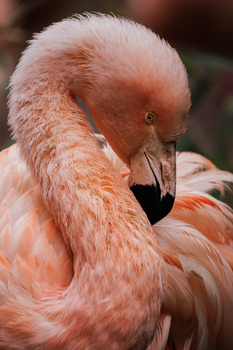















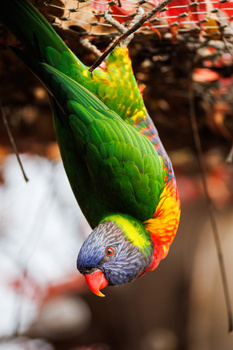





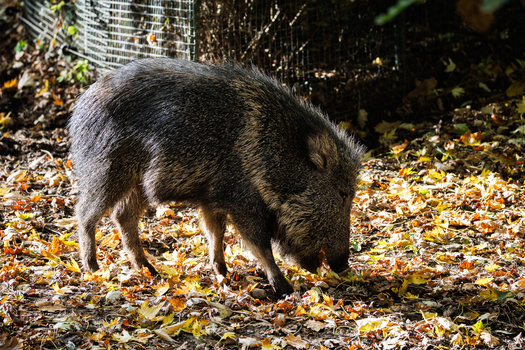


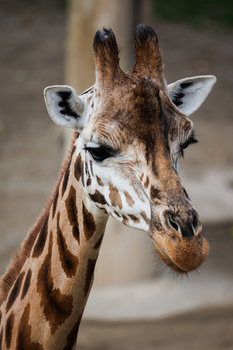






















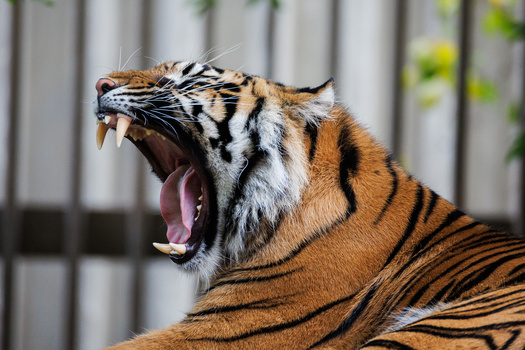












Question:
Can you zoom out fully with the teleconverter on?
This is the only annoyance with my 100-500…
I haven't tried it personally with the 2x, but the spec sheet I was given said its capable of 1600mm at f/18 with the 2x converter so I'd say it can.
This is a little weird as with the EF mount the AF cut-off was f13 (it would still function but terribly slow and inconsistent) so with the RF have they overcome this technical restriction?
F/18 wide open is kinda hilarious to think about. That viewfinder will be so dark and AF won't have a prayer.
Yeah useless af..good luck manually focusing on something at 1600mm.
Zoom "out" would mean to 200mm with a 2X extender, not zooming "in" to 1600mm. The RF 100-400 can't zoom all the way to the wide end without the rear element hitting the front of the extender.
Gordon Laing from cameralabs tried it with the 2x and 1.4 converter and it worked fine, zoomed all the way out and in and autofocus functioned
I'll have to say I'm not at all sure that f9 at 800mm is going to cut it, except in very good light. I went to South Africa on safari in September with the Sony 200-600, which is f6.3 at 600mm and even that was tough at times (the best times for animals being at dawn and dusk). This will be worse starting at f6.3 for just 200mm.
I'm sure it'll find a market, of course it will, but it will have to be used in good light. Otherwise just stick a x1.4 TC on one of the smaller zooms if and when required. I'm sure the 100-500 blows this away in practical use (and is a lot sharper than the photos above). And a used 100-500 will come in at around the same price as this lens new.
Its a lens for bird photography collector types who don’t really care about producing gorgeous images in gorgeous light so just walk around in broad daylight snapping shots of birds they encounter as a record of what they saw. It will be great for that if you don’t mind the size.
Question:
Do you have an opinion on the image quality if you compare it to the RF 800mm F/11?
The lovely lady from Pangolin did a nice review:
https://www.youtube.com/watch?v=dFBGjnviXjY&t=641s
She does the comparison you asked about.
I posted this on that link :
I love following Pangolin's videos and esp. Janine. But she is a bit of Canon fangirl! In the OM1 video she actually criticised the effective DoF of the OM1 (constant f4.5 effective DoF F9, same as this Canon) but it seems she finds F9 is acceptable here (even though the OM1 gave the same workarounds, she gives here, for a smooth BG)!
Additionally I'll have to say I'm not at all sure that f9 at 800mm is going to cut it, except in very good light. In South Africa on safari in September (Monwana) with the Sony 200-600, which is f6.3 at 600mm, even that was tough at times (the best times for animals obviously being at dawn and dusk, I won't be taking it again, next time it's the constant f4.5 of the OM1 + 150-400mm eff. 300-800mm). So what ISO are you going to be at at f9? This will be far worse than the faster zooms, the 200-800mm starting at f6.3 for just 200mm (I'd stick with a 70-200/2.8 on the 2nd camera). I'd have taken an extra ½ kg and $1000 more for a maximum f6.3/f7.1 at 800mm.
I'm sure it'll find a market, of course it will, but it will have to be used in good light. Otherwise just stick a x1.4 TC on one of the smaller zooms, if and when required, for far more flexibility (esp. on a high MP camera). I'm sure the 100-500 blows this away in practical use (and is a lot sharper than any of the photos I've seen from this lens, which are frankly disappointing). And a used 100-500 will come in at around the same price as this lens new.
Well, in canon defense they only charge 2k, while oly charge 7k
That is true. However a better comparison then perhaps is the Olympus 100-400mm f/5-6.3 IS, a 35mm 200-800mm-equivalent. With f6.3 just, and only just as ISOs still soar to 12,800 - 25, 600 at times, doable for wildlife during early mornings or at dusk. That lens (very very positively reviewed and very sharp) BTW costs just half of Canon's 200-800 at around £1,000 / $1,000.
APS-C at f/6.3 collects the same amount of light as FF at f/9.5.
Micro Four-Thirds at f/6.3 collects the same amount of light as FF at f/12.6.
Given the same sensor technology (i.e. a 24MP MFT sensor or a 48 MP FF sensor cut from the same silicon wafer and using the same off-die processing) the FF camera has the same S/N ratio at ISO 25,600 as the MFT does at ISO 6400.
This is a little bit of straw man argument TBH. Excuse me if I state anything obvious below which you undoubtedly are already aware of.
So although the 35mm sensor gathers x4 more light than that of the M43 sensor it doesn't equate to x4 more light per square cm. As is easily proven by noting how the Metabones Speedbooster works, it doesn't suck in more light but gathers the 35mm equivalent light and focuses all that light onto a M43 sensor. Using the inverse law then x4 more light becomes 1 stop.
We should also mention, for those unaware, that the difference in sensor size doesn't affect light gathering (again proving my point above) in that if the f-stop is the same then the intensity of light hitting the sensor is the same, regardless of the FL or size of the physical aperture (proving that the x4 more light of the 35mm is spread evenly across it's x4 larger surface area sensor, so an equivalent light intensity to that of the M43 sensor).
Therefore a M43 f1.4 lens is the exact equivalent of a 35mm f1.4 lens as far as light gathering (on the sensor) is concerned. It's the DoF that changes (which can be a positive as well as a negative depending on your case use).
BTW 1 : we shouldn't use the megapixels of a sensor (rather it's physical size) in this discussion since clearly lower MP cameras of the same generation and sensor size tend to outperform higher MP cameras when it comes to noise.
BTW 2 : smaller sensors are more light efficient. So not a 2 stop difference from M43 to 35mm but ca. 1⅔ stops. Which will slightly reduce that S/N difference (again using the inverse law that ⅓ becomes more significant).
So here are two scenarios where we can counter the S/N advantage of 35mm vs M43 ... with the use of IBIS and lower shutter speeds inherent to the sensor size (smaller sensor = less movement so less motion blur).
Since the M43 sensor is x4 smaller by surface area (or a little under x2 in diameter) the IBIS is far more effective than that in 35mm cameras, meaning slower shutter speeds and lower ISOs can be used for many of the same low light scenes.
Not in every scenario of course (moving subjects will still require a minimum SS to freeze them if that is required), but it is something that is often overlooked. Add that to the fact that you can use much slower shutter speeds anyway (even without IBIS) and that is often enough to reduce ISOs below those of 35mm cameras (e.g. my Sony A7r5, A7r4 or A9) in some low light scenarios.
4X more light is 2 stops for photons collected at the same f-number. Calculating different distances from light sources to subjects through air is different than calculating light through lenses with different refractive indices to get the same framing with differing sensor sizes.
4X the area collects 4X as many photons when the field intensity is the same. That's basic physics. An f/1.4 lens on a FF sensor collects 4X more photons than an f1.4 lens on an MFT sensor in the same light with the same Tv and the same angle of view.
BTW#1: When the output from both are displayed at the same viewing size that is not necessarily the case if both sensors collected the same number of photons [total photons collected, not photons per unit area]. Displaying the output from both at the same size normalizes noise.
BTW#2: Not universally true. *Some* smaller sensors with better technology may be more efficient than *some* larger sensors with lesser technology. The obverse is equally true. *Some* FF sensors with better tech are better than *some* smaller sensors with lesser tech.
Smaller sensor means higher magnification to get to the same display size, thus any blur is magnified *more*. You might have had an argument over a decade ago when large sensors had no IBIS and MFT cameras did. That hasn't been the case for quite some time. Many FF cameras now have IBIS with up to 8 stops of stabilization. Of course that does absolutely nothing for subject motion, so neither format has an advantage or disadvantage with moving subjects.
When you indicate this lens has "weather sealing" (although less than a L series lens) it is still misleading. Fstoppers and Canon need to call these lens "weather resistant" not weather sealed. It's a big difference. Many outdoor/landscape photographers will only use actual weather sealed lenses to protect their investment in bad weather or poor conditions.
No L lens is truly "weather sealed". If it were you could submerge it in water without any water getting in. None of Canon's "weather sealed" lenses can be submerged in water with no ill effects. It's all just varying degrees of weather resistance.
And as Uncle Roger is known to say, "You can assume whatever you like, but when you send your lens in for repair, ‘weather sealed’ still means ‘the warranty doesn’t cover water damage’."
I've seen the OM Systems cameras submerged (though of course no guarantees) with an Oly Pro lens on! Best weather sealing in the business. They even have IPX ratings (no other manufacturer has them independently tested).
Yet even if you send a lens (or body) to OM factory Service with evidence of internal water damage they won't even touch it for any price, much less cover it under warranty. No one reputable will repair a camera or lens with internal evidence of water. None of them.
Of course not, how can you prove that you even had a lens mounted ! Not really the point though. They are IPX1 or IP53 rated, that is independently tested and rated and (officially) the highest in the business. And note the wording is 'weather resistant' not 'waterproof' regardless of how many people clean them by running under water (as many clamin to do).
No other camera manufacturer has their products independently tested, though Pentax also claims their cameras to be fully weather resistant (before submersion), which I can verify as far back as 2010 when I used to continue birding in pouring rain with a pair of K5s whilst CaNikon users sheltered.
Of course common sense comes into it, they'll only be as impermeable as their weakest point so if you're not using an IP53 rated lens ...
I've shot field sports in pouring rain with Canon gear (5 & 7 series cameras and L lenses, both internal zooming/focusing and extending zooming/focusing, as well as the Sigma 120-300/2.8). Never had an issue with my "non-rated" gear. Once my hat got soaked through enough to let my head get wet, the desire to keep socks and underwear dry, on the other hand, did sometimes induce me to stand under the video tent behind the end line.
This is so tempting. The extra 200mm over my Sigma 150-600 Contemporary is appealing. We live on the Puget Sound and regularly see whales and eagles, so more reach is always good. How would you compare it to the Contemporary?
I mean use a crop sensor Canon body?
Yep! Same here. Once they hit the market, I'll be trading my 150-600 for this lens. I don't shoot wildlife in low light very often and that's what this lens will be used for.
Really nice!! That's one heck of a range and it has a fairly close minimum focus distance for flexibility. I suppose if f/9 is too slow, a speed booster on a crop sensor would be a useful bump up.
How are you going to use a speed booster on an RF lens made for a 20mm registration distance on any RF camera with a 20mm registration distance? You'd lose infinity focus and probably anything further than only a few feet. Speed boosters only work with lenses made for longer registration than the body they are adapted to. The difference has to be enough to allow for the thickness of the speed booster.
Well, using ISO 1000 to 6400 on a bright day you degrade e.g. R6 mk2 dynamic range to the half, so from approx 11.5 EV to 6 EV, not talking about noise - what are levels of 15 years old cameras. Actually, you get what you pay for ... and I think in this context the price of this lens is quite high ...
Can't understand why Canon doesn't make their mounts Arca-Swiss compatible. Looks like a minot modification to the existing mount.
That's certainly an interesting and novel approach. But then I keep wondering how this actually compares with a Sony 200-600 or Nikon 180-600 plus 1.4x TC. Seems that those are much brighter when no need for the long end, and just as bright when there is.
Doesn't matter how this lens compares to the Nikon or Sony. Someone buying this lens, in all likelihood, owns a Canon camera and isn't going to jump to another system because of this class of lens.
Actually, I’m looking at upgrading and I’m trying to consider whether or not I want to jump from Canon the Sony.
That's good for the camera industry. We need photographers buying new stuff to keep the money rolling in to the manufacturers. Regardless, you'll have a good camera and lenses no matter your choice.
f/9 for wildlife? No. Sorry, the zoo isn't wildlife. Have fun shooting at ISO 25000.
Just got an R3 and 100-500 recently. Not in the market for another but this is tempting so will have to test one when I can. Also hello Andrej. Long time no see.
Hey Daniel! Long time indeed. Almost a decade now 😅 Nice setup you've got!
Thanks. You won't believe how much it cost
Got the Tekzone special?
More canon special.....
Can I confirm with you that you can move the handle completely?